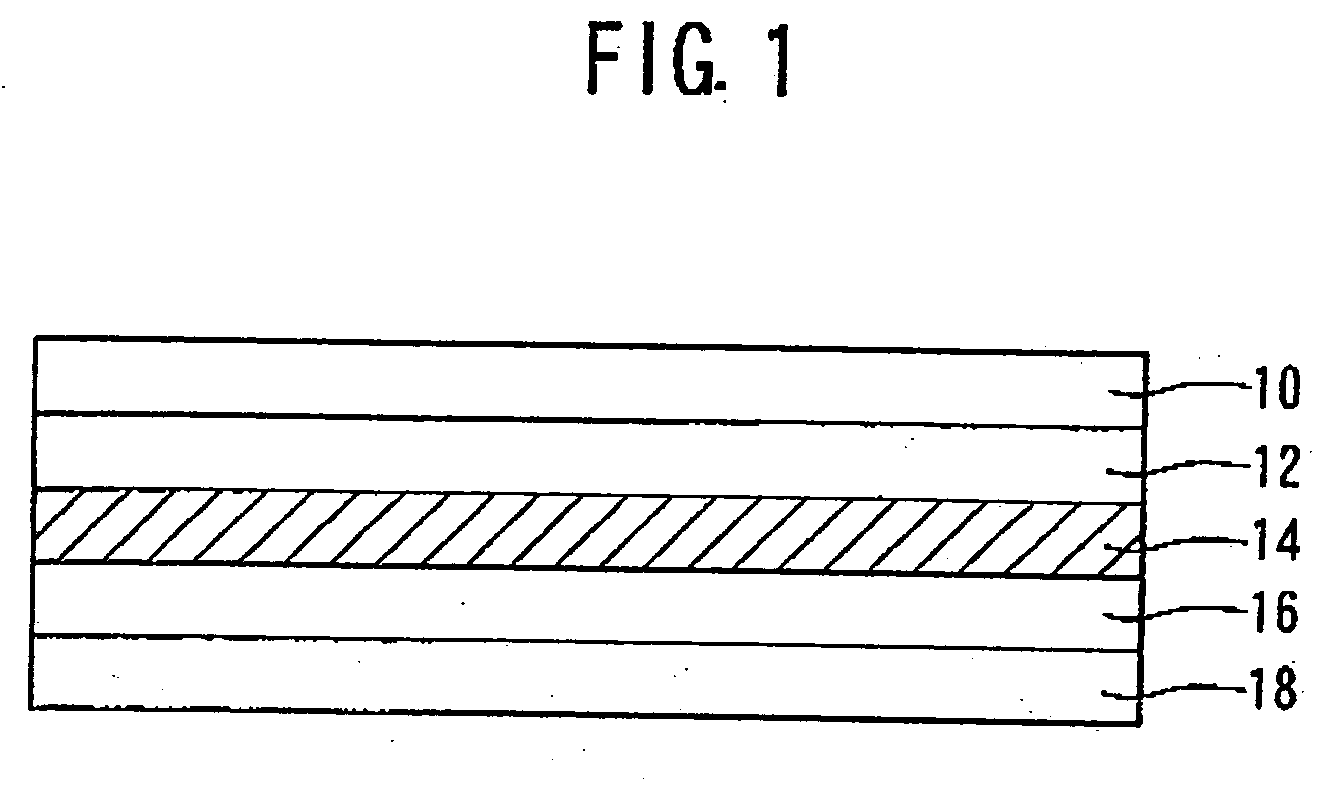Organic electroluminescent element
a technology of electroluminescent elements and organic materials, applied in the field of luminous elements, can solve the problems of slow response of emission, and achieve the effect of high luminous efficiency
- Summary
- Abstract
- Description
- Claims
- Application Information
AI Technical Summary
Benefits of technology
Problems solved by technology
Method used
Image
Examples
example 1
1. Production of a Luminous Element
[0099] A washed ITO substrate was placed in a vapor deposition apparatus to deposit TPD (N,N′-diphenyl-N,N′-di(m-natryl)-benzidine with a thickness of 50 nm. On this TPD, the exemplified compound (5) and rubrene were deposited in a ratio of 99:1 with a thickness of 1 nm and the exemplified compound (5) and Ir(ppy)3 (the following structure) were deposited in a ratio of 17:1 thereon with a thickness of 1 nm. This process was repeated 18 times to form a thin film having a total thickness of 36 nm. At this time, a crucible charged with the exemplified compound (5) and rubrene and a crucible charged with the exemplified compound (5) and Ir(ppy)3 were heated to a temperature enough to deposit always and were deposited repeatedly by switching using a shutter disposed in the vicinity of the crucibles. A compound C (the following structure) with a thickness of 36 nm was deposited on the formed thin film.
example 2
[0103] An EL element was produced in the same manner as in Example 1 except that the exemplified compound (8) was used in place of the exemplified compound (5) in Example 1 and evaluated in the same manner.
[0104] As a result, yellow luminescence was obtained and the external quantum efficiency at 200 cd / m2 was 12.0%.
example 3
[0105] An EL element was produced in the same manner as in Example 1 except that the exemplified compound (10) was used in place of the exemplified compound (5) in Example 1 and evaluated in the same manner.
[0106] As a result, yellow luminescence was obtained and the external quantum efficiency at 200 cd / m2 was 13.5%.
PUM
| Property | Measurement | Unit |
|---|---|---|
| internal quantum efficiency | aaaaa | aaaaa |
| internal quantum efficiency | aaaaa | aaaaa |
| external quantum efficiency | aaaaa | aaaaa |
Abstract
Description
Claims
Application Information
 Login to View More
Login to View More - R&D
- Intellectual Property
- Life Sciences
- Materials
- Tech Scout
- Unparalleled Data Quality
- Higher Quality Content
- 60% Fewer Hallucinations
Browse by: Latest US Patents, China's latest patents, Technical Efficacy Thesaurus, Application Domain, Technology Topic, Popular Technical Reports.
© 2025 PatSnap. All rights reserved.Legal|Privacy policy|Modern Slavery Act Transparency Statement|Sitemap|About US| Contact US: help@patsnap.com



